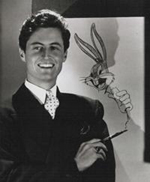 Bob Clampett (May 8, 1913 - May 4, 1984) was an American animator, producer, director, and puppeteer best known for his work on the Looney Tunes animated series from Warner Bros., and the television shows Time for Beany and Beany and Cecil. Animation historian Jerry Beck lauded Clampett for "putting the word 'looney' in Looney Tunes." While living in Hollywood, Clampett showed an interest in animation and puppetry in his early teens. They lived next door to Charlie Chaplin and his brother Syd. The young Clampett designed the first Mickey Mouse dolls for Walt Disney. As Clampett would later claim in interviews, Disney was impressed with the young artist, and promised him a job. However, a lack of space at Disney's tiny Hyperion studio prevented Clampett from taking the position. Clampett attended Glendale's Harvard High School and when he graduated in 1931, he secured a job at the studio of Hugh Harman and Rudolf Ising where he worked on the studio's Looney Tunes and Merrie Melodies series, including Lady, Play Your Mandolin! (which is, indeed, the very first Merrie Melodie cartoon). In his first years at the studio, Clampett mostly worked for Friz Freleng, under whose guidance Clampett grew into an able animator. In 1935, he designed the studio's first major star, Porky Pig, who appeared in Freleng's film I Haven't Got a Hat. Clampett moved to Tex Avery's unit that same year, and the two soon developed an irreverent style of animation that would set Warner Bros. apart from its competitors. Working apart from the other animators in a dilapidated wooden building, Avery and Clampett soon discovered they were not the only inhabitants. They shared the building with thousands of tiny termites. They christened the building Termite Terrace, a name eventually used by fans and historians to describe the entire studio. They were soon joined by animators Chuck Jones, Virgil Ross, and Sid Sutherland, and worked virtually without interference on their new, groundbreaking style of humor for the next year. It was a wild place with an almost college fraternity-like atmosphere. Animators would frequently pull pranks such as gluing paper streamers to the wings of flies. Leon Schlesinger, who rarely ventured there, was reputed on one visit to have remarked in his lisping voice, "Pew, let me out of here! The only thing missing is the sound of a flushing toilet!!" Clampett about this time pressured studio head Leon Schlesinger to give him a chance as a director, and was finally given that chance on an animated sequence for the Joe E. Brown film When's Your Birthday? (1937), animating signs of the zodiac. This led to what was essentially a co-directing stint with fellow animator Chuck Jones for the financially ailing Ub Iwerks, whom Schlesinger subcontracted to produce several Porky Pig shorts. These shorts featured the short-lived and generally unpopular Gabby Goat as Porky's sidekick. Despite Clampett and Jones' contributions, however, Iwerks was the only credited director. Clampett was promoted to director in late 1937, and he soon entered his golden age. His cartoons grew increasingly violent, irreverent, and surreal, not beholden to even the faintest hint of real-world physics, and his characters have been argued to be easily the most rubbery and wacky of all the Warner directors'. Clampett was heavily influenced by the Spanish surrealist artist Salvador Dalí, as is most visible in Porky in Wackyland (1938), wherein the entire short takes place within a Dalí-esque landscape complete with melting objects and abstracted forms. Clampett and his work can even be considered part of the surreal movement, as it incorporated film as well as static media. Over the next nine years, Clampett created some of the studio's funniest and most outrageous cartoons, including The Daffy Doc, Porky in Egypt, Bugs Bunny Gets the Boid, A Tale of Two Kitties (which introduced Tweety Bird), A Corny Concerto, the controversial Coal Black and de Sebben Dwarfs, Russian Rhapsody, and The Great Piggy Bank Robbery. The Big Snooze was his final cartoon with the studio, and one for which he did not get screen credit (only one of three he directed pitting Bugs Bunny and Elmer Fudd). It was largely Clampett's influence that would impel the Warners directors to shed the final vestiges of all Disney influence and enter the territory they are famous for today. Clampett was also famous for doing some brief voices or sound effects in some of the cartoons, the most famous being ending his most famous cartoons with his own joke on impersonating the Warner Bros. zooming in shield sound effect (otherwise known as "Bay-woop!"). When Tex Avery departed in 1941, Avery's unit was taken over by Clampett, while Norman McCabe took over Clampett's old unit. Clampett finished Avery's remaining unfinished cartoons. When McCabe joined the armed forces, Frank Tashlin rejoined Schlesinger as director, and that unit was eventually turned over to Robert McKimson. Clampett left in 1946; his unit was taken over by Arthur Davis. While the generally accepted story was that Clampett left over matters of artistic freedom, Davis remembered that Clampett was fired by then-cartoon studio executive Eddie Selzer, who was far less tolerant of him than Leon Schlesinger. Clampett's style was becoming increasingly divergent from those of Freleng and Jones, the other unit directors, and this is thought by some to be the primary reason for his departure. The Warners style that he was so instrumental in developing was leaving him behind. Warner Bros. had recently bought the rights to the entire Looney Tunes and Merrie Melodies studio from Schlesinger, and while his cartoons of 1946 are today considered on the cutting edge of the art for that period, at the time, he was considered somewhat of a dinosaur.
Bob Clampett (May 8, 1913 - May 4, 1984) was an American animator, producer, director, and puppeteer best known for his work on the Looney Tunes animated series from Warner Bros., and the television shows Time for Beany and Beany and Cecil. Animation historian Jerry Beck lauded Clampett for "putting the word 'looney' in Looney Tunes." While living in Hollywood, Clampett showed an interest in animation and puppetry in his early teens. They lived next door to Charlie Chaplin and his brother Syd. The young Clampett designed the first Mickey Mouse dolls for Walt Disney. As Clampett would later claim in interviews, Disney was impressed with the young artist, and promised him a job. However, a lack of space at Disney's tiny Hyperion studio prevented Clampett from taking the position. Clampett attended Glendale's Harvard High School and when he graduated in 1931, he secured a job at the studio of Hugh Harman and Rudolf Ising where he worked on the studio's Looney Tunes and Merrie Melodies series, including Lady, Play Your Mandolin! (which is, indeed, the very first Merrie Melodie cartoon). In his first years at the studio, Clampett mostly worked for Friz Freleng, under whose guidance Clampett grew into an able animator. In 1935, he designed the studio's first major star, Porky Pig, who appeared in Freleng's film I Haven't Got a Hat. Clampett moved to Tex Avery's unit that same year, and the two soon developed an irreverent style of animation that would set Warner Bros. apart from its competitors. Working apart from the other animators in a dilapidated wooden building, Avery and Clampett soon discovered they were not the only inhabitants. They shared the building with thousands of tiny termites. They christened the building Termite Terrace, a name eventually used by fans and historians to describe the entire studio. They were soon joined by animators Chuck Jones, Virgil Ross, and Sid Sutherland, and worked virtually without interference on their new, groundbreaking style of humor for the next year. It was a wild place with an almost college fraternity-like atmosphere. Animators would frequently pull pranks such as gluing paper streamers to the wings of flies. Leon Schlesinger, who rarely ventured there, was reputed on one visit to have remarked in his lisping voice, "Pew, let me out of here! The only thing missing is the sound of a flushing toilet!!" Clampett about this time pressured studio head Leon Schlesinger to give him a chance as a director, and was finally given that chance on an animated sequence for the Joe E. Brown film When's Your Birthday? (1937), animating signs of the zodiac. This led to what was essentially a co-directing stint with fellow animator Chuck Jones for the financially ailing Ub Iwerks, whom Schlesinger subcontracted to produce several Porky Pig shorts. These shorts featured the short-lived and generally unpopular Gabby Goat as Porky's sidekick. Despite Clampett and Jones' contributions, however, Iwerks was the only credited director. Clampett was promoted to director in late 1937, and he soon entered his golden age. His cartoons grew increasingly violent, irreverent, and surreal, not beholden to even the faintest hint of real-world physics, and his characters have been argued to be easily the most rubbery and wacky of all the Warner directors'. Clampett was heavily influenced by the Spanish surrealist artist Salvador Dalí, as is most visible in Porky in Wackyland (1938), wherein the entire short takes place within a Dalí-esque landscape complete with melting objects and abstracted forms. Clampett and his work can even be considered part of the surreal movement, as it incorporated film as well as static media. Over the next nine years, Clampett created some of the studio's funniest and most outrageous cartoons, including The Daffy Doc, Porky in Egypt, Bugs Bunny Gets the Boid, A Tale of Two Kitties (which introduced Tweety Bird), A Corny Concerto, the controversial Coal Black and de Sebben Dwarfs, Russian Rhapsody, and The Great Piggy Bank Robbery. The Big Snooze was his final cartoon with the studio, and one for which he did not get screen credit (only one of three he directed pitting Bugs Bunny and Elmer Fudd). It was largely Clampett's influence that would impel the Warners directors to shed the final vestiges of all Disney influence and enter the territory they are famous for today. Clampett was also famous for doing some brief voices or sound effects in some of the cartoons, the most famous being ending his most famous cartoons with his own joke on impersonating the Warner Bros. zooming in shield sound effect (otherwise known as "Bay-woop!"). When Tex Avery departed in 1941, Avery's unit was taken over by Clampett, while Norman McCabe took over Clampett's old unit. Clampett finished Avery's remaining unfinished cartoons. When McCabe joined the armed forces, Frank Tashlin rejoined Schlesinger as director, and that unit was eventually turned over to Robert McKimson. Clampett left in 1946; his unit was taken over by Arthur Davis. While the generally accepted story was that Clampett left over matters of artistic freedom, Davis remembered that Clampett was fired by then-cartoon studio executive Eddie Selzer, who was far less tolerant of him than Leon Schlesinger. Clampett's style was becoming increasingly divergent from those of Freleng and Jones, the other unit directors, and this is thought by some to be the primary reason for his departure. The Warners style that he was so instrumental in developing was leaving him behind. Warner Bros. had recently bought the rights to the entire Looney Tunes and Merrie Melodies studio from Schlesinger, and while his cartoons of 1946 are today considered on the cutting edge of the art for that period, at the time, he was considered somewhat of a dinosaur.






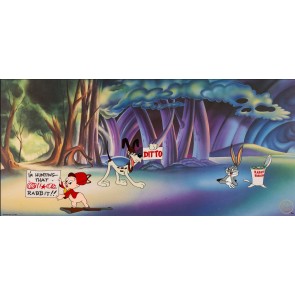

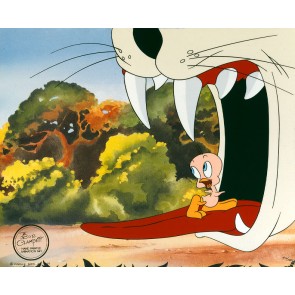

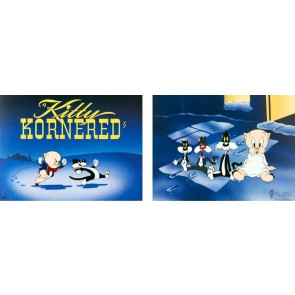

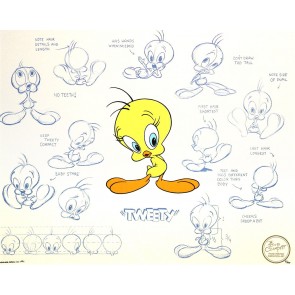
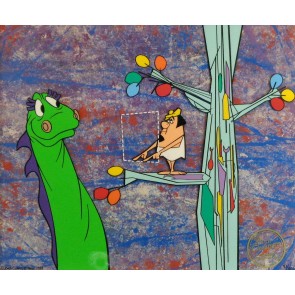
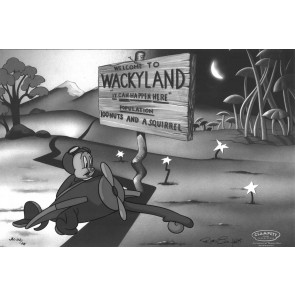
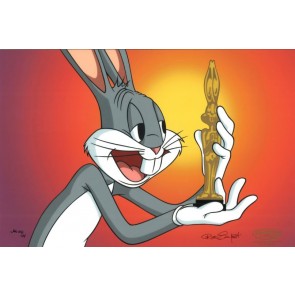



